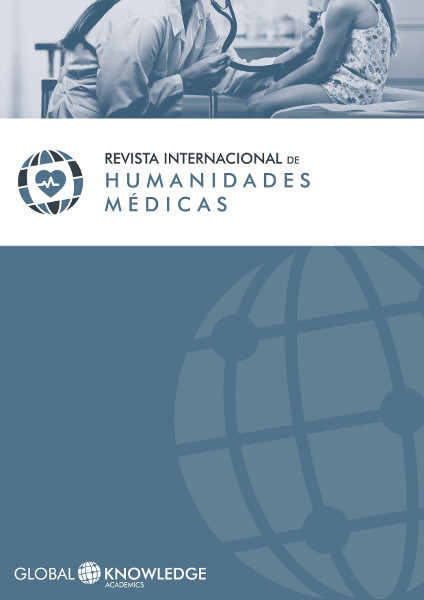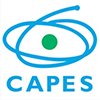Program to Support Life (PRAVIDA): Integrating Research, Intervention and Education for Suicide Prevention
DOI:
https://doi.org/10.37467/gka-revmedica.v3.1171Palabras clave:
Suicidío, Prevenção, InterdisciplinaridadeResumen
Suicide constitutes an important global public health issue. The World Health Organization (WHO) estimates that global suicide mortality increased about 60% in the last 45 years. Among all 27 Brazilian states, Ceará occupies the 9th position in rates of suicide and Fortaleza, its state capital, had the 4th highest suicide rate among Brazilian capitals, between entre 2004 and 2006. The aim of PRAVIDA (Programa de apoio à vida - Program to support life) is to prevent suicide through therapeutic assistance, dissemination of information and research about suicide. The objective is to present the pioneering experience of PRAVIDA regarding the therapeutic care of patients with suicidal ideation or attempted suicide. Therefore, PRAVIDA intends to establish partnerships to facilitate new strategies to prevent suicide and improve the knowledge on the topic, stimulating appreciation of life, the host and the listening subject who seek medical treatment in the program.
Estadísticas globales ℹ️
|
95
Visualizaciones
|
72
Descargas
|
|
167
Total
|
|
Citas
Abreu, C. (2006). Síndromes psiquiátricas: diagnósticos e entrevista para o profissional de saúde mental. Porto Alegre: Artmed.
Bertolote, J. M. (2010). Detecção do risco de suicídio nos serviços de emergência Psiquiátrica. Revista Brasileira de Psiquiatria, 32 (2), pp. 87–95.
Cebrià, A.I. (2013). Effectiveness of a telephone management programme for patients discharged from an emergency department after a suicide attempt: controlled study in a Spanish population. J Affect Disord, 147 (1-3), pp. 269–276.
Botega, N (2010). Comportamento suicida em númros. En: Debates. Ano 2. Nº1. pp.11–15.
Flaherty, J. A. (1990). Psiquiatria – Diagnóstico e Tratamento. Porto alegre: Artes Médicas.
IBGE (2010) - Brazilian Institute of Geography and Statistics. Demographic Census of 2010.
Lovisi G. M. (2009). “Epidemiological analysis of suicide in Brazil from 1980 to 2006”. Rev Bras Psiquiatr, 31 (2), pp. 86–94.
Luxton. (2013). “Can postdischarge follow-up contacts prevent suicide and suicidal behavior? A review of the evidence.” Crisis , 34 (1), pp. 32–41.
Mann. (2005). “Suicide Prevention Strategies: A Systematic Review.” JAMA , 294(16), pp. 2064–2074.
Marques, N. (2005) “Entrevista de triagem: espaço de acolhimento, escuta e ajuda terapêutica”. En: Macedo, M. M. K., Carrasco, L. K. (Con)textos de entrevista: olhares diversos sobre a interação humana. São Paulo: Casa do Psicólogo.
Ministério da Saúde – Brasil (2009). Prevenção do Suicídio: manual dirigido para profissionais da saúde da atenção básica. Disponível em: <http://portal.saude.gov.br/portal/arquivos/pdf/manu_prevencao240111.pdf>.
Oliveira, M. A. (2010). O suicídio no estado do Ceará: estudo de epidemiologia ecológica [dissertation]. Fortaleza, Ceará, Brazil: Universidade Estadual do Ceará.
OMS (2002). World Report on Violence and Health. Geneva: OMS.
Pajonk, F. G. (2002). “Suicides and suicide attempts in emergency medicine.” Crisis, 3 (2), pp. 68–73.
Sheehan D. V. (1998). “The Mini-International Neuropsychiatric Interview (MINI): the development and validation of a structured diagnostic psychiatric interview for DSM-IV and ICD-10”. J Clin Psychiatry, 59 (20), pp. 22–33.
Souza, F.G.M. (2010). “Suicídio: Dimensão do problema e o que fazer.” En: Debates . Ano 2. Nº5, pp.6–8.
Tavares, M. (2000). “A entrevista clínica”. En: Cunha, J. Psicodiagnóstico-V . Porto Alegre: Artmed.
WHO. (2005). “Suicide attempts, plans, and ideation in culturally diverse sites: the WHO SUPREMISS community survey.” Psychol Med , 35 , pp. 1457– 1465.
Descargas
Publicado
Cómo citar
Número
Sección
Licencia
Aquellos autores/as que publiquen en esta revista, aceptan los términos siguientes:
- Los autores/as conservarán los derechos morales sobre la obra y cederán a la revista los derechos comerciales.
- Transcurrido un año desde su publicación, la versión del editor pasará a estar en acceso abierto en la web de la editorial, pero la revista mantendrá el copyright de la obra.
- En el caso de que los autores deseen asignar una licencia abierta Creative Commons (CC), podrán solicitarla escribiendo a administracion@edulab.es









